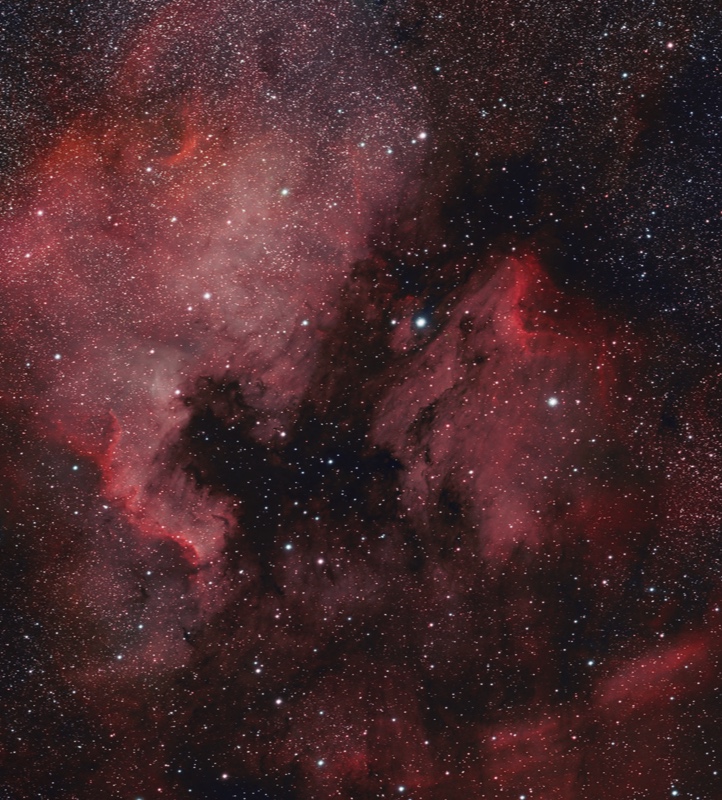
Often referred to erroneously as the North American Nebula, the North America Nebula is an emission nebula in the Cygnus, close to the bright star Deneb. The Pelican Nebula is an emission nebula located with the North America Nebula. The NGC 7000 shape resembles that of the continent of North America, complete with a Florida peninsula and Mexico forming a prominent Gulf of Mexico shape.
NGC 7000 is visible from Spring through Summer into the Fall. As long as an observer can see the Summer Triangle of Deneb, Vega, and Altair, the North America Nebula and its companion Pelican Nebula can be seen.
The gaseous contortions of the Pelican Nebula bear a resemblance to its namesake bird. The Pelican Nebula is also located near Deneb, and is divided from its more prominent neighbor, the North America Nebula, by a dark dust cloud.
NGC 7000 was discovered by William Herschel on October 24, 1786. The Pelican Nebula, also designated by two Index Catalogue of Nebulae numbers IC 5070 and IC 5067, was discovered by the Reverend Thomas Espin in 1899, with its discovery announced in 1900. Both nebulae are part of a large Hydrogen-II emission region in Cygnus, with both the North America Nebula and the Pelican Nebula serving as a massive nursery for newly formed stars. The distance of the nebula complex is not precisely known, nor is the star responsible for ionizing the hydrogen so that it emits light. If the star inducing the ionization is Deneb, as some sources say, the nebula complex would be about 1800 light-years away, and the size of the North America Nebula would be 100 light years across. The Pelican Nebula is estimated to be 30 light years across.
Observing the North America and Pelican nebulas requires medium-to-large binoculars and the help of (UHC) filters. This is a challenging, but rewarding pair to observe. 12X60, or better yet 15×70, binoculars in a dark country sky are needed to adequately observe this Cosmic Duet. With the aid of UHC filters to enhance the viewing and allowing only Oxygen-III and Hydrogen-beta emission lines to pass, the dimmer Pelican Nebula can be detected along with details of the North America Nebula.
Without the UHC filters, a 15×70 binocular will pick up the entire Florida / Gulf of Mexico / Mexico / Central America region of NGC 7000. Just the slightest amount of ambient background light from light pollution or bright moonlight will render the nebulosity invisible.
To observe both the North America and Pelican, seek out the darkest of sky locations and use UHC filters. Use a tripod, if necessary, since 12×60 or 15×70 binoculars are difficult to handhold steadily for any length of time. Or lay back into a comfy bean bag chair!